
Filter News
Area of Research
- (-) Biology and Environment (103)
- (-) Materials for Computing (13)
- (-) Neutron Science (94)
- Advanced Manufacturing (5)
- Biological Systems (1)
- Biology and Soft Matter (4)
- Building Technologies (2)
- Chemical and Engineering Materials (3)
- Chemistry and Physics at Interfaces (7)
- Computational Biology (1)
- Computational Chemistry (5)
- Computational Engineering (1)
- Computer Science (3)
- Data (1)
- Electricity and Smart Grid (1)
- Energy Frontier Research Centers (7)
- Energy Science (169)
- Fuel Cycle Science and Technology (2)
- Functional Materials for Energy (8)
- Fusion and Fission (33)
- Fusion Energy (7)
- Geographic Information Science and Technology (1)
- Isotopes (22)
- Materials (122)
- Materials Synthesis from Atoms to Systems (8)
- Materials Under Extremes (7)
- National Security (45)
- Neutron Data Analysis and Visualization (2)
- Nuclear Science and Technology (27)
- Quantum Condensed Matter (3)
- Quantum information Science (4)
- Sensors and Controls (2)
- Supercomputing (160)
- Transportation Systems (4)
News Type
News Topics
- 3-D Printing/Advanced Manufacturing (4)
- Artificial Intelligence (8)
- Big Data (7)
- Bioenergy (30)
- Biology (46)
- Biomedical (16)
- Biotechnology (7)
- Chemical Sciences (7)
- Clean Water (10)
- Composites (1)
- Computer Science (19)
- Coronavirus (10)
- Energy Storage (6)
- Environment (61)
- Exascale Computing (4)
- Fossil Energy (1)
- Frontier (3)
- High-Performance Computing (13)
- Hydropower (6)
- Machine Learning (7)
- Materials (8)
- Materials Science (12)
- Mathematics (3)
- Mercury (6)
- Microscopy (9)
- Nanotechnology (7)
- National Security (3)
- Neutron Science (55)
- Nuclear Energy (1)
- Partnerships (1)
- Physics (2)
- Polymers (3)
- Quantum Computing (1)
- Quantum Science (1)
- Security (2)
- Simulation (9)
- Space Exploration (1)
- Summit (8)
- Transportation (3)
Media Contacts
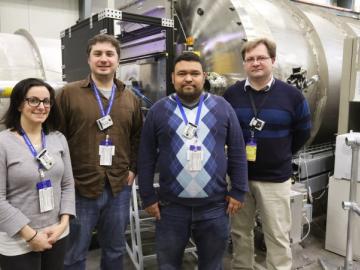
Scientists from the National Institute of Standards and Technology (NIST) and the University of Maryland are using neutrons at Oak Ridge National Laboratory (ORNL) to capture new information about DNA and RNA molecules and enable more accurate computer simulations of how they interact with everything from proteins to viruses.
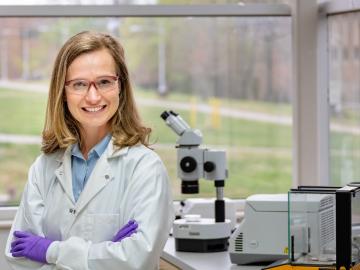
Amber McBride is using her expertise in nanotechnology, drug delivery, and disease models to research fundamental challenges in human health in the ORNL Biosciences Division.
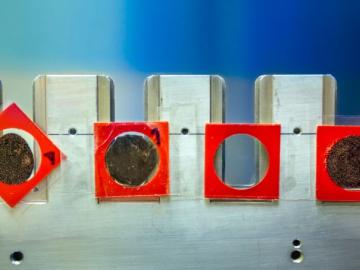
Tempering, the heating process that gives chocolate its appealing sheen and creamy texture, is a crucial part of crafting quality chocolate. But, at the molecular level, it gets a little tricky, and when done incorrectly, can render entire batches of chocolate gritty and unappetizing.
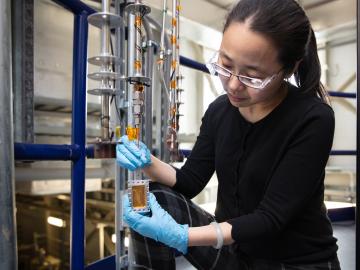
Researchers at the Department of Energy’s Oak Ridge National Laboratory, Pacific Northwest National Laboratory and Washington State University teamed up to investigate the complex dynamics of low-water liquids that challenge nuclear waste processing at federal cleanup sites.
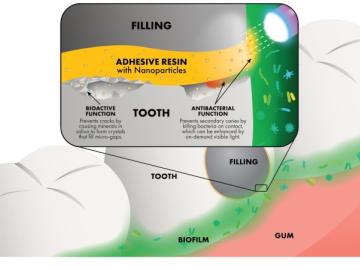
To help address the issue of dental restoration, Oak Ridge National Laboratory researchers are using neutron scattering to study how nanoparticles with antibacterial properties can be added to adhesive resins, which are used by dentists to strengthen the bond between a tooth and its polymer composite filling.

Ionic conduction involves the movement of ions from one location to another inside a material. The ions travel through point defects, which are irregularities in the otherwise consistent arrangement of atoms known as the crystal lattice. This sometimes sluggish process can limit the performance and efficiency of fuel cells, batteries, and other energy storage technologies.
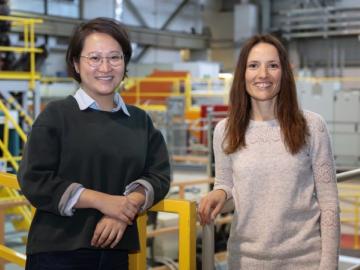
Yue Yuan, a second-year PhD student at NC State University’s Wilson College of Textiles, is working to create textiles that filter carbon dioxide (CO2) by using the latest scientific techniques in synthesis and imaging. Known as biocatalytic textiles, these materials could serve as sustainable scrubbers for CO2 capture by using enzymes trapped in bio-based polymers to catalyze the hydration of CO2.

To learn more about interactions between drug molecules and micelles, Associate Professor Megan Robertson and graduate students Tyler Cooksey and Tzu-Han Li from the University of Houston (UH) are using neutrons at the Department of Energy’s (DOE’s) Oak Ridge National Laboratory (ORNL).
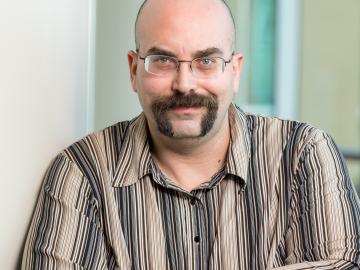
Attracted to biology, math, and physics as a young student, Omar Demerdash decided that when the time came to narrow his academic interests he wouldn’t pick and choose: he’d pursue them all. Today he’s using his expertise in computational biophysics to model and analyze how molecules interact with p...



